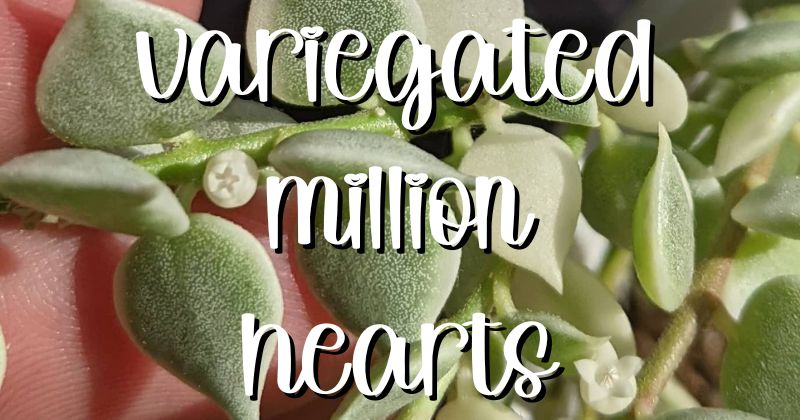If you’re a succulent lover, you must have heard of the fascinating Dischidia ruscifolia variegata ‘Variegated Million Hearts.’ This beautiful and unique trailing plant is perfect for adding a touch of greenery to your home or garden. Let’s dive deeper into the world of this intriguing succulent and learn how to care for it.
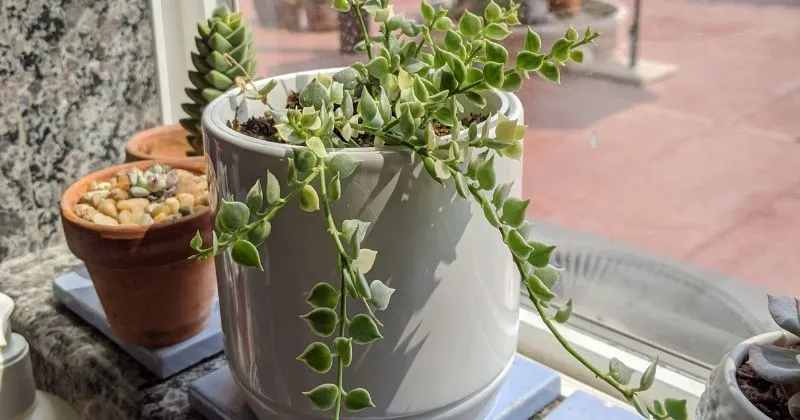
‘Variegated Million Hearts’ Care Guide:
Origin and Characteristics
Growth habits
Dischidia ruscifolia variegata, commonly known as ‘Variegated Million Hearts,’ is a trailing epiphytic succulent plant native to the tropical regions of Southeast Asia, including the Philippines, Malaysia, and Indonesia. As an epiphyte, it typically grows on tree trunks and branches in its natural habitat.
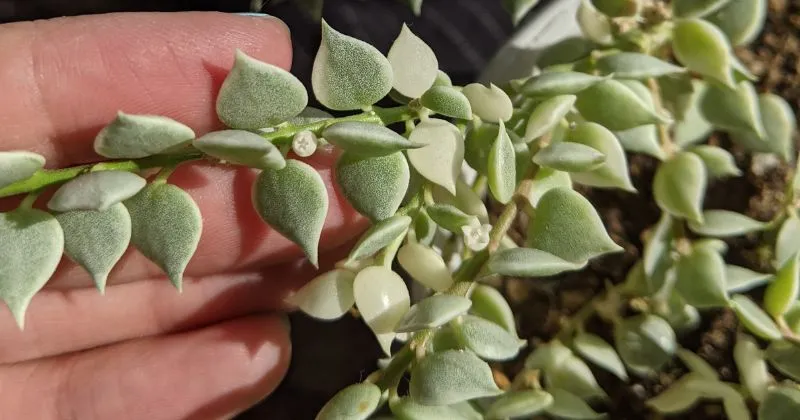
Distinctive features
‘Variegated Million Hearts’ is characterized by its small, heart-shaped leaves that are variegated with creamy white and green markings. The leaves grow densely along the slender, cascading stems, creating a stunning visual appearance. This succulent’s distinctive growth pattern makes it ideal for hanging baskets, vertical gardens, or as a trailing accent in a mixed container.
Ideal Growing Conditions for ‘Variegated Million Hearts’
Light
Dischidia ruscifolia variegata ‘Variegated Million Hearts’ thrives in bright, indirect light. It can tolerate some direct sunlight but prefers dappled shade to protect its delicate leaves from scorching. If grown indoors, place it near an east or west-facing window, or use a grow light to provide the necessary illumination.
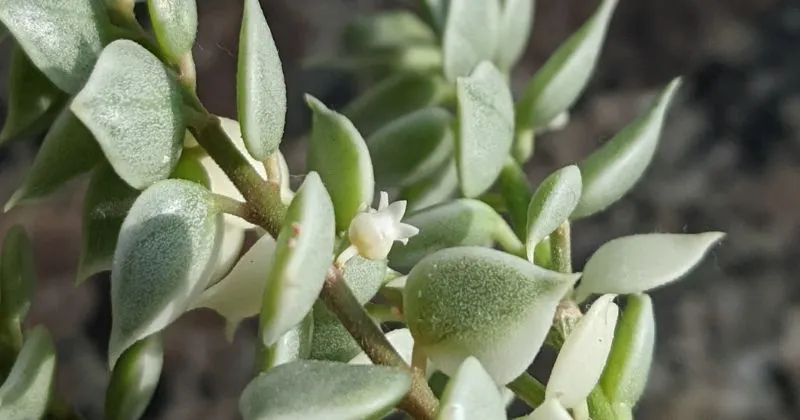
Temperature
‘Variegated Million Hearts’ prefers a warm, stable temperature range of 65-80°F (18-27°C). Keep it away from drafts, air conditioning vents, or heating sources to prevent temperature fluctuations that could stress the plant.
Humidity
As a tropical plant, Dischidia ruscifolia variegata ‘Variegated Million Hearts’ enjoys moderate to high humidity levels. Maintain a humidity level of 50% or higher by placing a humidifier nearby, misting the plant regularly, or placing it on a pebble tray filled with water.
Soil
A well-draining soil mix is crucial for the health of your ‘Variegated Million Hearts’. Use a mostly inorganic blend of succulent mix, chunky orchid bark, and perlite or pumice, which will provide the necessary drainage, aeration, and support for the plant’s roots.
Proper Care and Maintenance
Watering
Dischidia ruscifolia variegata ‘Variegated Million Hearts’ requires a careful balance of moisture. Allow the top inch of soil to dry out between waterings, then water thoroughly until the excess drains out. Be careful not to overwater, as this can lead to root rot and other issues. Since it is an epiphytic plant that hails from jungles, a humid environment is perfect for your ‘Variegated Million Hearts’.
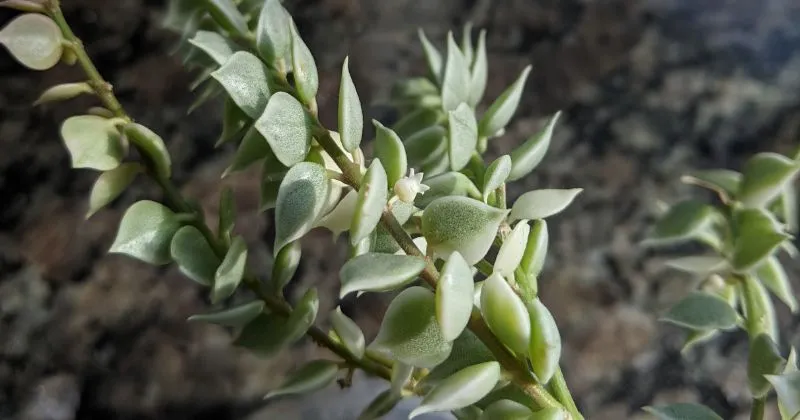
Fertilization
Feed your ‘Variegated Million Hearts’ with a balanced, water-soluble fertilizer diluted to half strength every 4-6 weeks during the growing season if at all. Avoid over-fertilizing, as this can cause leaf burn and other problems.
Pruning
Prune your Dischidia ruscifolia variegata ‘Variegated Million Hearts’ to maintain its shape and encourage bushier growth. Remove any dead, damaged, or yellowing leaves and trim back any excessively long stems.
Pest and disease management
Keep an eye out for common pests like mealybugs, scale insects, and spider mites. Treat any infestations promptly with insecticidal soap or neem oil. Prevent fungal diseases by providing proper air circulation and avoiding overwatering.
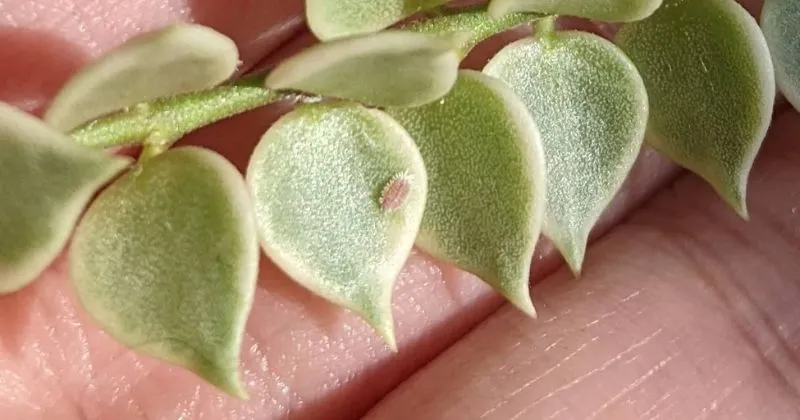
Propagation Techniques
Stem cuttings
To propagate Dischidia ruscifolia variegata ‘Variegated Million Hearts’, take a healthy stem cutting with at least 2-3 leaves. Remove the lower leaves and let the cutting dry for a day or two. Then, place it in a well-draining soil mix, and keep the soil slightly moist until new roots develop.

Division
Another method of propagation of your ‘Variegated Million Hearts’ is division. Gently remove the plant from its pot and separate it into smaller sections, each with a healthy root system. Repot the divisions into individual containers filled with a well-draining soil mix.
Caring for Dischidia ruscifolia variegata ‘Variegated Million Hearts’ is a rewarding experience, as this unique and stunning succulent adds a touch of beauty to any space. By providing the proper growing conditions and practicing regular maintenance, you’ll enjoy the captivating presence of your ‘Variegated Million Hearts’ for years to come.
FAQs
1. Why are the leaves on my Dischidia ruscifolia variegata ‘Variegated Million Hearts’ turning yellow?
Yellowing leaves can be a sign of overwatering or nutrient deficiency. Check your watering schedule and ensure the soil is well-draining. If necessary, adjust your fertilization routine.
2. Can I grow Dischidia ruscifolia variegata outdoors?
Yes, you can grow this plant outdoors in USDA hardiness zones 10 and above, where temperatures remain consistently above 65°F (18°C). Provide dappled shade to protect the plant from intense sunlight. ‘Variegated Million Hearts’ will thrive in humid climates unlike most succulents which need a semi-arid climate.
3. How often should I repot my ‘Variegated Million Hearts’?
Repot your Dischidia ruscifolia variegata every 2-3 years or when the plant outgrows its container. Choose a pot that is slightly larger than the current one and has drainage holes.
4. Is Dischidia ruscifolia variegata toxic to pets?
Dischidia ruscifolia variegata is not known to be toxic to pets. However, it’s always a good idea to keep plants out of reach of curious pets to prevent any potential issues.

Where to Buy Succulents Online

